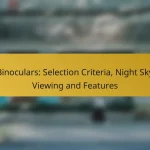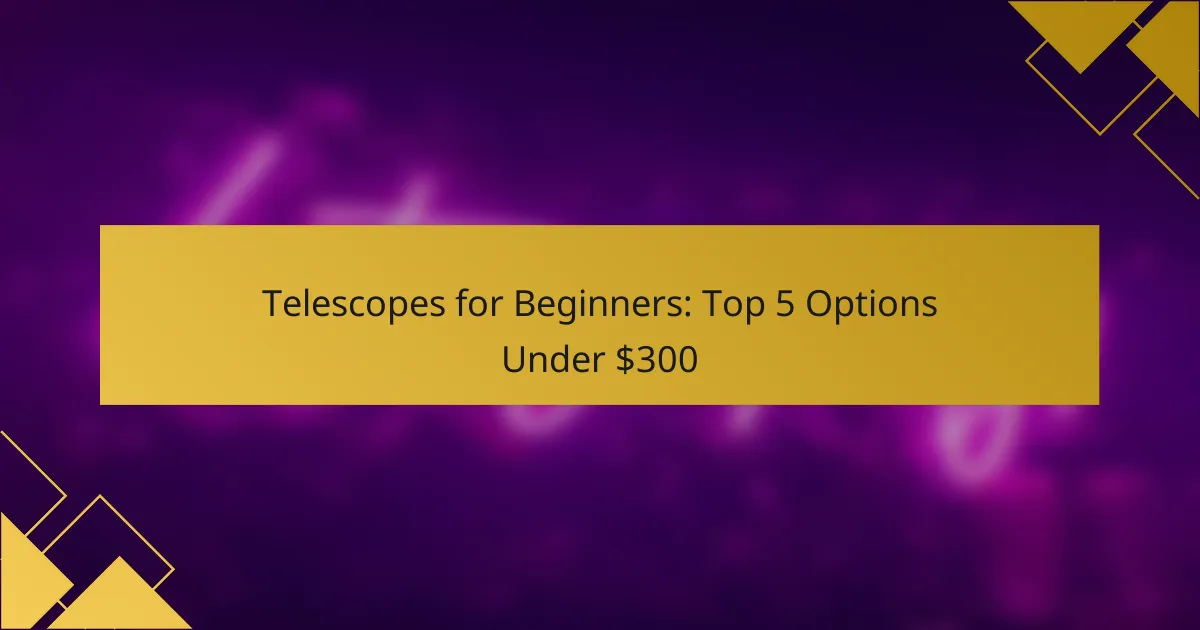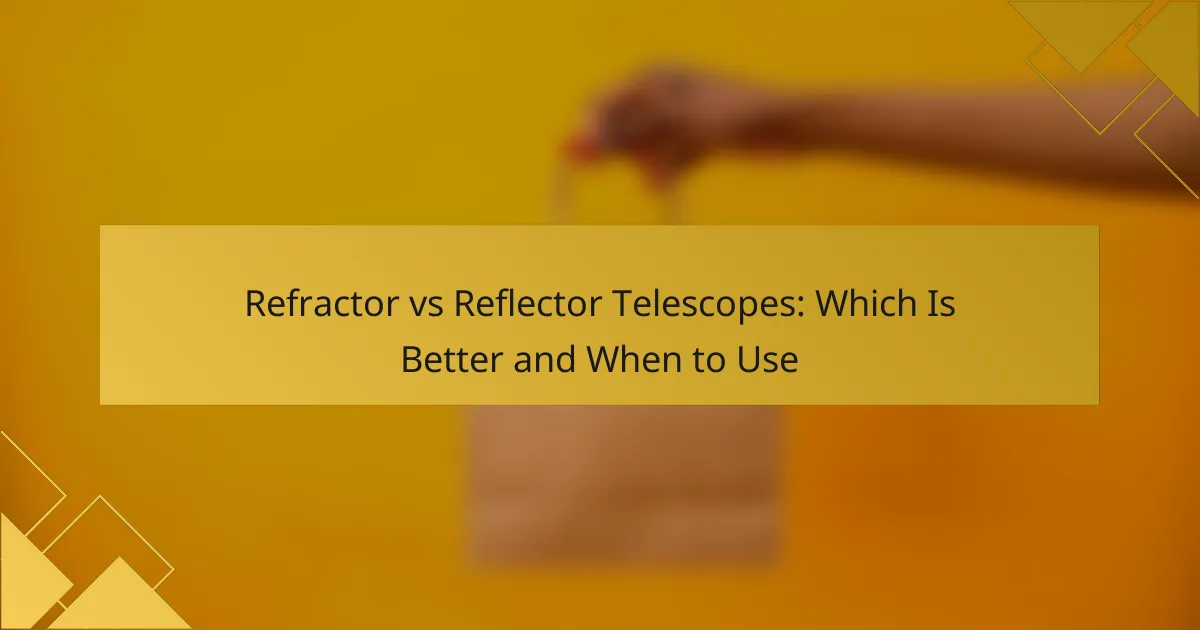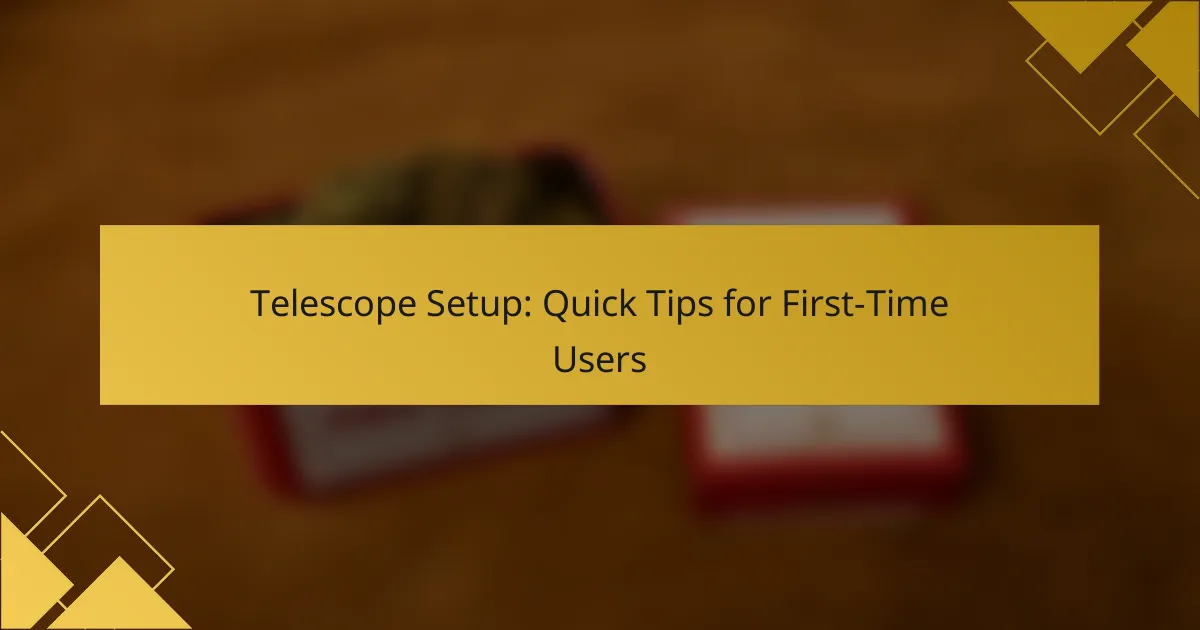Choosing the right telescope for kids can ignite a lifelong passion for astronomy. Look for beginner models that are user-friendly, lightweight, and portable, such as the Celestron Astromaster 70AZ, Orion StarBlast 4.5, and Meade Infinity 70mm. These telescopes should also feature adjustable height tripods and durable construction to ensure they can withstand the enthusiasm of young explorers.
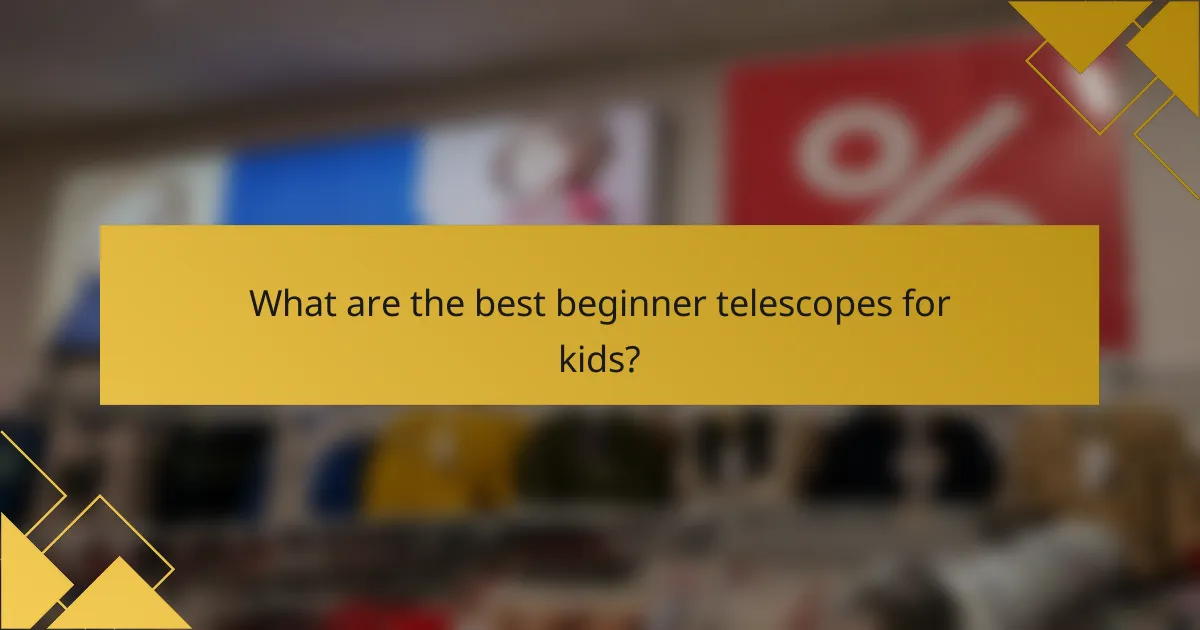
What are the best beginner telescopes for kids?
The best beginner telescopes for kids are user-friendly models that offer good optics and stability while being lightweight and portable. Popular choices include the Celestron Astromaster 70AZ, Orion StarBlast 4.5, and Meade Infinity 70mm, each catering to different preferences and budgets.
Celestron Astromaster 70AZ Telescope
The Celestron Astromaster 70AZ is an excellent entry-level telescope designed for ease of use. It features a 70mm aperture, which allows for bright and clear images of celestial objects like the Moon and planets.
This telescope comes with a sturdy mount and a simple alt-azimuth design, making it easy for kids to point and track objects in the sky. It’s lightweight, making it convenient for family outings or backyard stargazing.
Orion StarBlast 4.5 Astro Reflector Telescope
The Orion StarBlast 4.5 is a compact and portable reflector telescope that provides impressive views for its size. With a 4.5-inch aperture, it can capture more light, revealing details in deep-sky objects like star clusters and nebulae.
This model is particularly user-friendly, featuring a tabletop design that makes it easy to set up and use. It’s a great option for kids who want to explore the night sky without the complexity of larger telescopes.
Meade Infinity 70mm Telescope
The Meade Infinity 70mm Telescope is another solid choice for young astronomers. It offers a 70mm aperture and comes with multiple eyepieces, allowing for varied magnification options to enhance viewing experiences.
This telescope features a simple setup process and a sturdy mount, making it suitable for beginners. Additionally, it includes a red dot finder scope, which helps kids locate objects in the sky more easily.

How to choose a telescope for children?
Choosing a telescope for children involves considering factors like type, ease of use, and portability. A suitable telescope should be engaging, easy to operate, and lightweight enough for kids to handle.
Consider the telescope type
The main types of telescopes are refractors, reflectors, and compound models. Refractors use lenses and are often user-friendly, making them a good choice for beginners. Reflectors use mirrors and can offer larger apertures for better viewing but may require more maintenance.
For children, a small refractor or a simple reflector is usually ideal. These types provide clear images and are generally easier to set up and use, which helps maintain a child’s interest in astronomy.
Evaluate ease of use
Ease of use is crucial when selecting a telescope for kids. Look for models with simple controls and straightforward assembly. Telescopes that come with a user-friendly mount, such as alt-azimuth mounts, allow for easier tracking of celestial objects.
Consider telescopes that include educational materials or apps to help children learn about the night sky. This can enhance their experience and make the learning process more enjoyable.
Check portability and weight
Portability is important for children who may want to take their telescope to different locations. A lightweight telescope, ideally under 10 kg, is easier for kids to carry and set up. Compact designs that can fit in a car trunk are also beneficial.
When assessing weight, consider the stability of the telescope as well. A balance between lightweight and sturdy construction will ensure that the telescope remains stable during use, allowing for a better viewing experience.

What features should a kid’s telescope have?
A kid’s telescope should have features that enhance usability and durability, making it suitable for young astronomers. Key attributes include an adjustable height tripod, a simple assembly process, and durable construction to withstand rough handling.
Adjustable height tripod
An adjustable height tripod is essential for a kid’s telescope, as it allows for comfortable viewing at different eye levels. This feature accommodates both children and adults, making it easier to share the experience of stargazing. Look for tripods that can extend from about 30 inches to 60 inches to ensure versatility.
When selecting a telescope, ensure the tripod is stable and easy to adjust. A lightweight design can be beneficial for kids to handle, but it should still provide solid support to prevent wobbling during use.
Simple assembly process
A simple assembly process is crucial for encouraging kids to use their telescope without frustration. Opt for models that require minimal tools and can be set up in under 15 minutes. Clear instructions and labeled parts can significantly enhance the experience.
Some telescopes come pre-assembled or with features like quick-release mounts, which can further simplify setup. Avoid complex designs that may discourage young users from engaging with astronomy.
Durable construction
Durable construction is vital for a kid’s telescope, as it needs to withstand occasional drops and rough handling. Look for telescopes made from high-quality materials such as aluminum or reinforced plastic that can endure outdoor conditions.
Additionally, consider models with weather-resistant features to protect against moisture and dust. A warranty can also provide peace of mind, ensuring that any manufacturing defects are covered, which is especially important for children’s products.
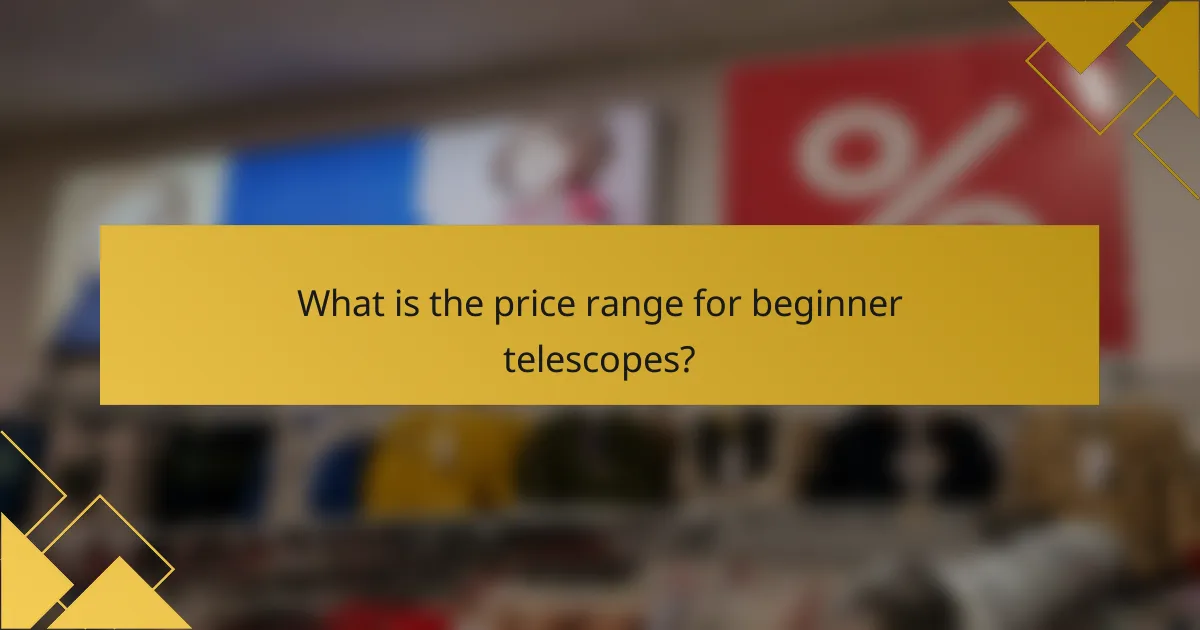
What is the price range for beginner telescopes?
Beginner telescopes typically range from around $50 to over $500, depending on features and quality. For kids, it’s advisable to look for options that balance affordability with usability to encourage their interest in astronomy.
Under $100 options
Telescopes in this price range are often basic refractors or small reflectors, suitable for casual stargazing. They usually come with simple mounts and limited accessories, making them easy to set up and use.
Examples include models like the Celestron AstroMaster 70AZ or the Orion StarBlast 4.5. These are lightweight and portable, perfect for young astronomers just starting out.
$100 to $300 options
This mid-range category offers better optics and sturdier mounts, enhancing the viewing experience. Telescopes in this bracket often include features like larger apertures and more advanced tracking systems.
Popular choices include the Sky-Watcher Heritage 130P and the Meade Infinity 102. These models provide clearer images and allow for more detailed observations of celestial objects.
Premium beginner telescopes over $300
Premium beginner telescopes offer advanced features such as computerized mounts, larger apertures, and superior optics. These telescopes are designed for serious young enthusiasts who want to explore the night sky more deeply.
Examples include the Celestron NexStar 4SE and the Orion SkyQuest XT8. While they require a higher investment, they provide a more rewarding experience and can grow with the user’s skills.
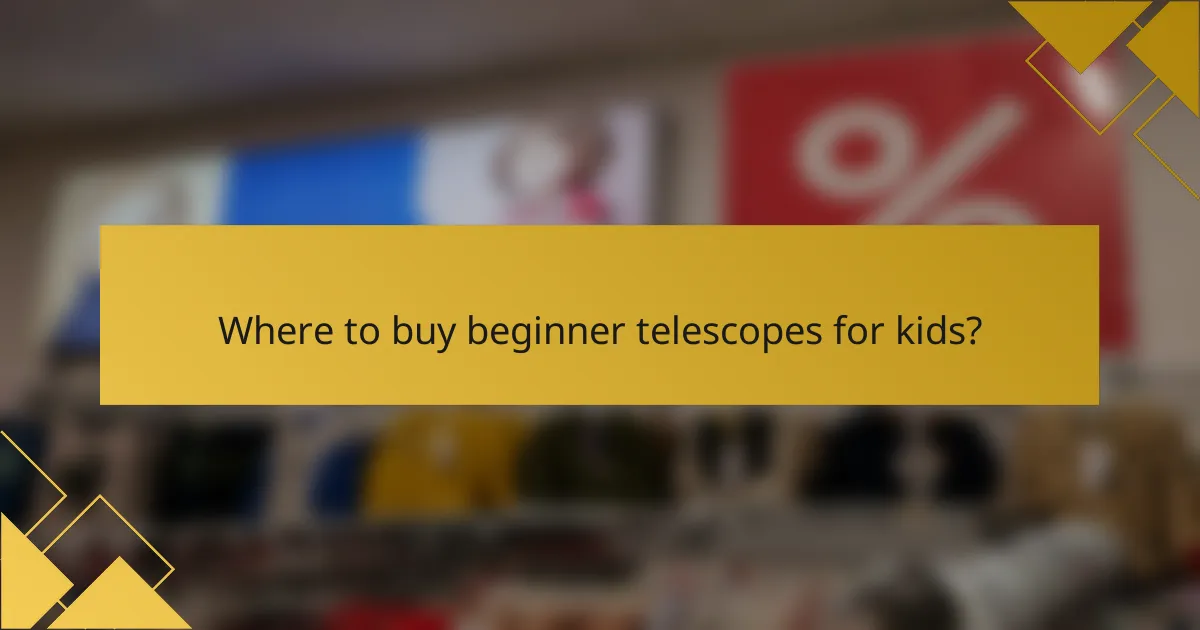
Where to buy beginner telescopes for kids?
Beginner telescopes for kids can be purchased from a variety of retailers, both online and in physical stores. Popular options include large e-commerce platforms, local department stores, and specialized astronomy shops, each offering different brands and price ranges.
Amazon telescope selection
Amazon offers a wide selection of beginner telescopes suitable for children, featuring various brands and price points. You can find options ranging from around $50 to several hundred dollars, depending on the features and quality. Look for telescopes with good reviews and ratings to ensure a positive experience.
When browsing, consider filters for age-appropriate models and user-friendly designs. Many products come with educational materials, which can enhance the learning experience for kids.
Walmart telescope offerings
Walmart provides a selection of beginner telescopes that are generally affordable, with prices typically starting around $40. These telescopes are often designed for ease of use, making them suitable for young astronomers. Check the store’s website for availability and specific models.
In-store purchases allow you to see the product firsthand, which can help in assessing size and build quality. Look for telescopes that include basic accessories like eyepieces and mounts to get started right away.
Local astronomy shops
Local astronomy shops can be excellent places to buy beginner telescopes for kids, as they often provide expert advice and personalized service. Prices may vary, but you can expect to pay anywhere from $100 to $300 for quality entry-level telescopes. These shops may also offer workshops or events that can enhance your child’s interest in astronomy.
Visiting a local shop allows you to ask questions and receive recommendations tailored to your child’s age and experience level. Additionally, you might find unique models that are not available in larger retail chains.
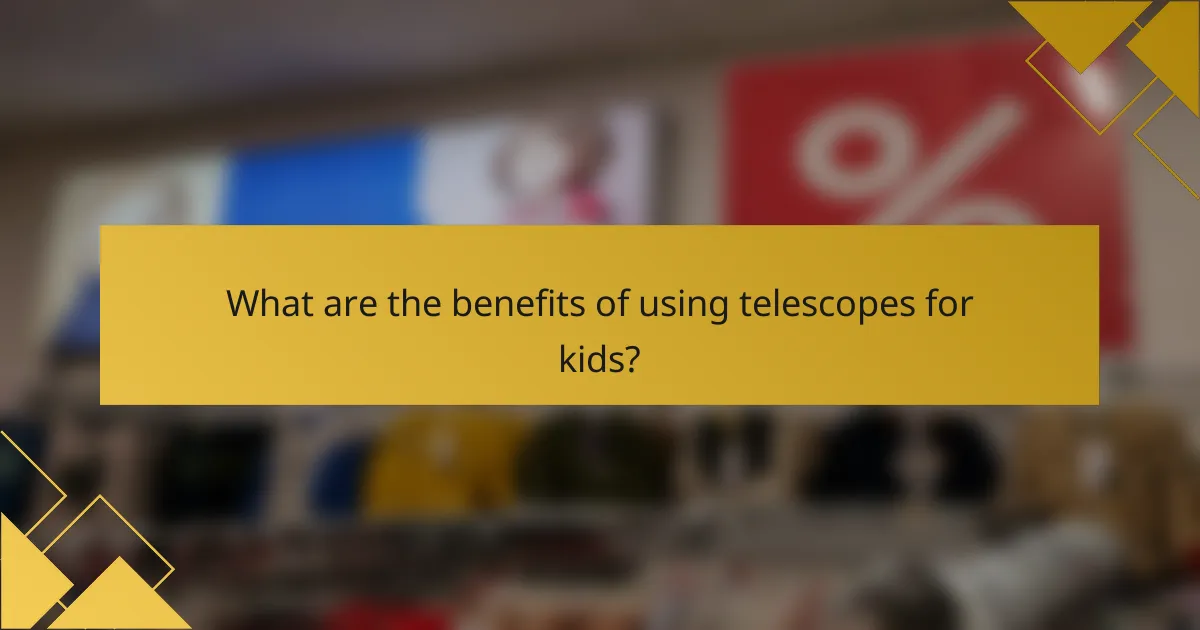
What are the benefits of using telescopes for kids?
Using telescopes for kids fosters a deeper understanding of astronomy and the natural world. They can spark interest in science, enhance observational skills, and provide a fun way to learn about celestial bodies.
Encourages scientific curiosity
Telescopes can ignite a child’s scientific curiosity by allowing them to explore the universe firsthand. Observing planets, stars, and other celestial phenomena encourages questions about how these objects work and their significance in the cosmos.
When children engage with telescopes, they often develop a desire to learn more about physics, mathematics, and the scientific method. This hands-on experience can lead to a lifelong passion for science and exploration.
To maximize this benefit, parents can guide their children in setting up the telescope and planning observation nights. Discussing what they see and encouraging them to keep a journal of their findings can further enhance their learning experience.
